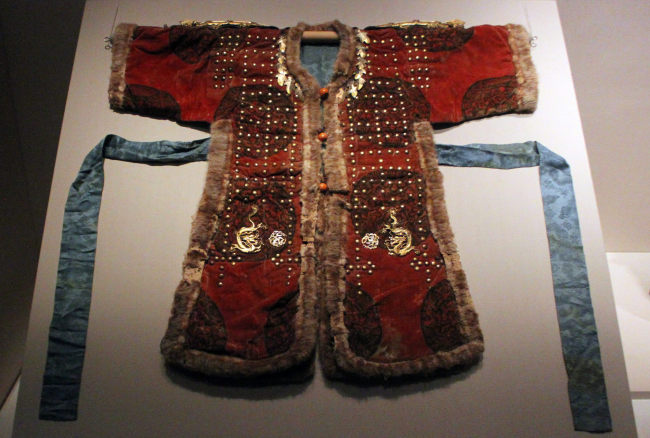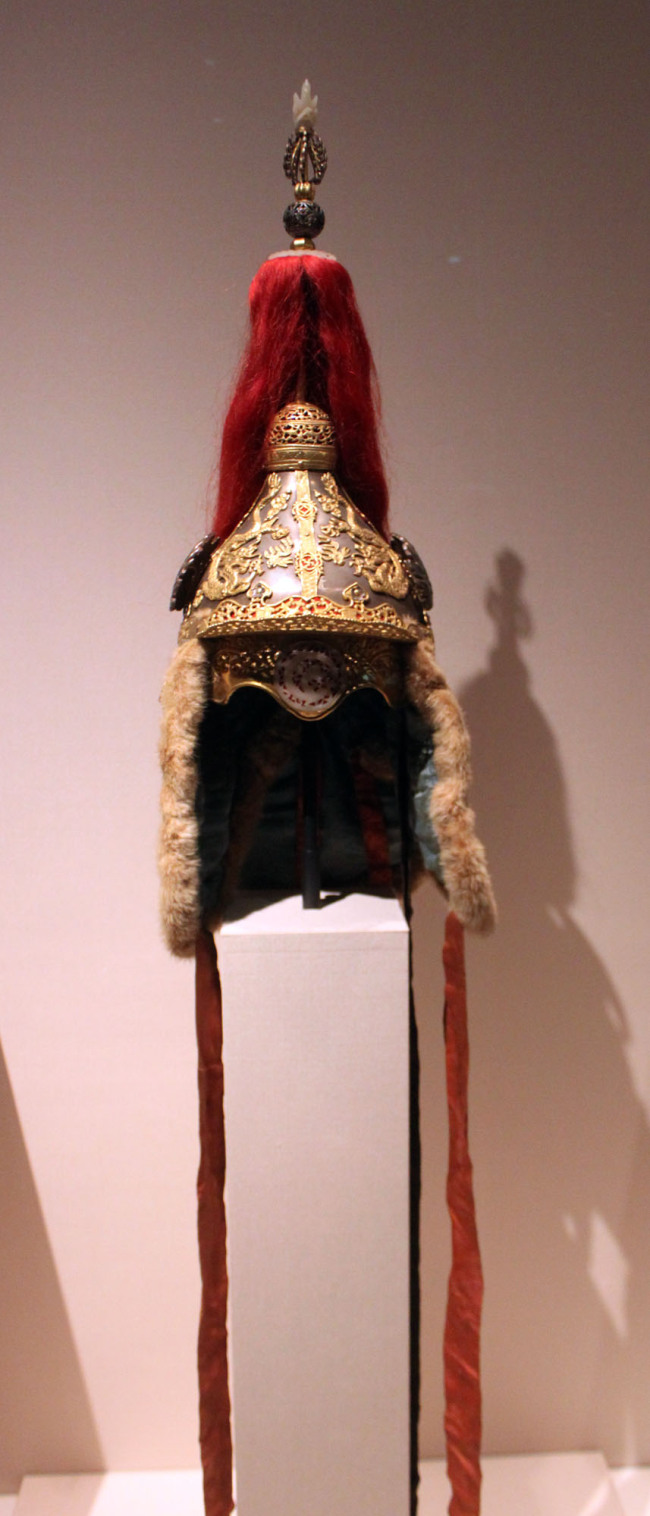Japan’s exhibition of possible Joseon royal belongings causes a stir
By Korea HeraldPublished : Oct. 3, 2013 - 19:13

Concerns are mounting over two items on exhibition at the Tokyo National Museum that are suspected of having been smuggled out of Korea during the Japanese colonial era (1910-1945).
Experts on the repatriation of cultural artifacts are urging the museum to investigate the nature of their acquisition, citing an international treaty of museums. The International Council of Museums’ code of ethics prohibits looted or illegally acquired items from being publicly exhibited. Some are suggesting a move for repatriation of the artifacts if they are confirmed to have been illegally acquired.
Experts on the repatriation of cultural artifacts are urging the museum to investigate the nature of their acquisition, citing an international treaty of museums. The International Council of Museums’ code of ethics prohibits looted or illegally acquired items from being publicly exhibited. Some are suggesting a move for repatriation of the artifacts if they are confirmed to have been illegally acquired.

On Oct. 1, the state museum kicked off the “Art of the Joseon Dynasty” exhibition at its Asian Gallery, featuring furnishings, costumes and accessories from Joseon (1392-1910). It includes a full set of armor and a headpiece that are believed to have been used by King Gojong (reign 1863-1907). The museum said the pieces are parts of the Ogura Collection based on donations from Takenosuke Ogura, a Japanese businessman who is alleged to have looted or smuggled a substantial amount of cultural artifacts out of Korea during the occupation.
Experts and civic activists claim that Ogura may have acquired the pieces in question illegally since the possession or purchase of royal belongings was strictly banned, even under the Japanese colonial rule.
“There is no proof that they were ‘donated’ or given as a token of favor from the royal family, which suggests that the artifacts may have been stolen,” said Rep. An Min-suk of the Democratic Party.
An and Ven. Hyemun have been working on the repatriation of stolen cultural heritage items located abroad. “Art of the Joseon Dynasty” was held at the request of the Buddhist monk to observe the “suspicious artifacts.”
An and Ven. Hyemun said that the museum should investigate how Ogura, whose son donated the items along with 1,000 other valuable artifacts to the museum in 1982, obtained the Joseon treasures. Ven. Hyemun said if the illegality is verified, the museum could also be held responsible.
The International Council of Museums prioritizes the fight against illicit trafficking of cultural goods. It notes that museums must be active in the fight as well and should adopt rules for acquisition and transfer of collections.
“Museums are asked to investigate the origin of any suspicious items and refuse to purchase or receive them,” Ven. Hyemun said, though admitting that “suspicious” can be subjective.
An said if they are verified to have been acquired illegally, he and his friends will start a campaign for the repatriation of said artifacts.
“The armor is in perfect condition, which is rare in Korea. I believe that if they are returned in a peaceful manner, it will truly contribute to bettering Korea-Japan ties,” he said.
Meanwhile, the Japanese museum has denied any illegality.
“All cultural properties that originated on the Korean Peninsula and are now the collections of our museum were obtained legally and appropriately,” Hiroyuki Ikeno, director of general affairs division at the museum, told The Korea Herald.
By Bae Ji-sook (baejisook@heraldcorp.com)
Experts and civic activists claim that Ogura may have acquired the pieces in question illegally since the possession or purchase of royal belongings was strictly banned, even under the Japanese colonial rule.
“There is no proof that they were ‘donated’ or given as a token of favor from the royal family, which suggests that the artifacts may have been stolen,” said Rep. An Min-suk of the Democratic Party.
An and Ven. Hyemun have been working on the repatriation of stolen cultural heritage items located abroad. “Art of the Joseon Dynasty” was held at the request of the Buddhist monk to observe the “suspicious artifacts.”
An and Ven. Hyemun said that the museum should investigate how Ogura, whose son donated the items along with 1,000 other valuable artifacts to the museum in 1982, obtained the Joseon treasures. Ven. Hyemun said if the illegality is verified, the museum could also be held responsible.
The International Council of Museums prioritizes the fight against illicit trafficking of cultural goods. It notes that museums must be active in the fight as well and should adopt rules for acquisition and transfer of collections.
“Museums are asked to investigate the origin of any suspicious items and refuse to purchase or receive them,” Ven. Hyemun said, though admitting that “suspicious” can be subjective.
An said if they are verified to have been acquired illegally, he and his friends will start a campaign for the repatriation of said artifacts.
“The armor is in perfect condition, which is rare in Korea. I believe that if they are returned in a peaceful manner, it will truly contribute to bettering Korea-Japan ties,” he said.
Meanwhile, the Japanese museum has denied any illegality.
“All cultural properties that originated on the Korean Peninsula and are now the collections of our museum were obtained legally and appropriately,” Hiroyuki Ikeno, director of general affairs division at the museum, told The Korea Herald.
By Bae Ji-sook (baejisook@heraldcorp.com)
-
Articles by Korea Herald

















![[KH Explains] Hyundai's full hybrid edge to pay off amid slow transition to pure EVs](http://res.heraldm.com/phpwas/restmb_idxmake.php?idx=652&simg=/content/image/2024/04/18/20240418050645_0.jpg&u=20240418181020)

![[Today’s K-pop] Zico drops snippet of collaboration with Jennie](http://res.heraldm.com/phpwas/restmb_idxmake.php?idx=642&simg=/content/image/2024/04/18/20240418050702_0.jpg&u=)